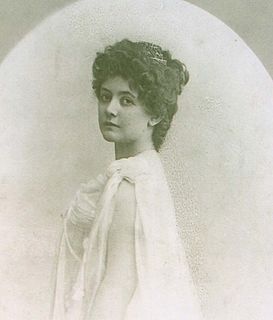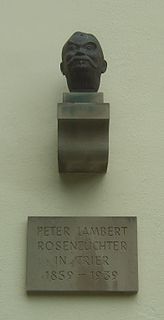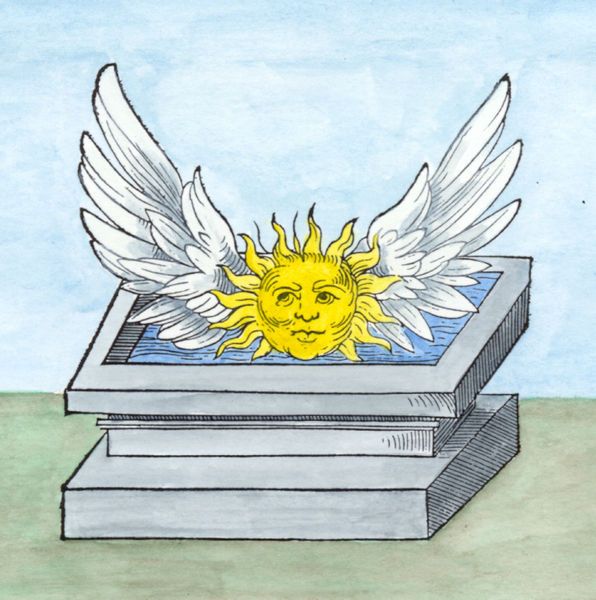| Look up rosarium in Wiktionary, the free dictionary. |
A rosarium is a rose garden. It may also refer to:
| Look up rosarium in Wiktionary, the free dictionary. |
A rosarium is a rose garden. It may also refer to:
| This disambiguation page lists articles associated with the title Rosarium. If an internal link led you here, you may wish to change the link to point directly to the intended article. |

A rose is a woody perennial flowering plant of the genus Rosa, in the family Rosaceae, or the flower it bears. There are over three hundred species and tens of thousands of cultivars. They form a group of plants that can be erect shrubs, climbing, or trailing, with stems that are often armed with sharp prickles. Flowers vary in size and shape and are usually large and showy, in colours ranging from white through yellows and reds. Most species are native to Asia, with smaller numbers native to Europe, North America, and northwestern Africa. Species, cultivars and hybrids are all widely grown for their beauty and often are fragrant. Roses have acquired cultural significance in many societies. Rose plants range in size from compact, miniature roses, to climbers that can reach seven meters in height. Different species hybridize easily, and this has been used in the development of the wide range of garden roses.

The Holy Rosary, also known as the Dominican Rosary, or simply the Rosary, refers to a form of prayer psalter used in the Catholic Church and to the string of knots or beads used to count the component prayers. When referring to the prayer, the word is usually capitalized ; when referring to the beads, it is written with a lower-case initial letter.

Sangerhausen is a town in Saxony-Anhalt, Germany, capital of the district of Mansfeld-Südharz. It is situated southeast of the Harz, approx. 35 kilometres east of Nordhausen, and 50 km (31 mi) west of Halle (Saale). About 31,000 people live in Sangerhausen.
Roseraie du Val-de-Marne or Roseraie de L'Haÿ is a notable rose garden in L'Haÿ-les-Roses, Val-de-Marne, France.

Uetersen is a city in the district of Pinneberg, in Schleswig-Holstein, Germany. It is situated approximately 7 km (4.3 mi) south of Elmshorn, and 30 km (19 mi) northwest of Hamburg at the small Pinnau River, close to the Elbe river. Uetersen is home to the Rosarium Uetersen, the oldest and largest rose garden in Northern Germany, created in 1929.

Rosarium Virginis Mariae is an Apostolic Letter by Pope John Paul II, issued on October 16, 2002, which declared October 2002 to October 2003 the "Year of the Rosary". It was published by Pope John Paul II in 2002 at the beginning of the twenty-fifth year of his pontificate.

A rose garden or rosarium is a garden or park, often open to the public, used to present and grow various types of garden roses or rose species. Designs vary tremendously and roses may be displayed alongside other plants or grouped by individual variety, colour or class in rose beds.

Countess Henrieta Hermína Rudolfína Ferdinanda Marie Antonie Anna Chotková of Chotkov and Vojnín – - (1863–1946), also known as the countess of roses was a grower of roses, who established the rosarium of Dolná Krupá (Slovakia),

Peter Lambert was a German rose breeder from Trier.
Albert Hoffmann (1846–1924) was a German rosarian.

The Europa-Rosarium, formerly the Rosarium Sangerhausen, is a municipal rose garden located in Sangerhausen, Saxony-Anhalt, Germany. With 8300 cultivars and species it is one of the largest rose collection in the world, playing an important role as budwood source and in research. In 2003 it was granted the Award of Garden Excellence by the World Federation of Rose Societies.

The Rosarium Uetersen is a rose garden located in the Rosenstadt Uetersen, Schleswig-Holstein, Germany, and is the oldest and largest rose garden in Northern Germany.

The Rosary of the Philosophers is a 16th-century alchemical treatise. It was published in 1550 as part II of De Alchimia Opuscula complura veterum philosophorum (Frankfurt). The term rosary in the title is unrelated to the Catholic prayer beads; it refers to a "rose garden", metaphoric of an anthology or collection of wise sayings.

There are differing views on the history of the Rosary. The exact origin of the Rosary as a prayer is less than clear and subject to debate among scholars. The use of knotted prayer ropes in Christianity goes back to the Desert Fathers in the 3rd and early 4th centuries. These counting devices were used for prayers such as the Jesus prayer in Christian monasticism. The period after the First Council of Ephesus in 431 witnessed gradual growth in the use of Marian prayers during the Middle Ages.
The Rosary is one of the most notable features of popular Catholic spirituality. According to Pope John Paul II, rosary devotions are "among the finest and most praiseworthy traditions of Christian contemplation." From its origins in the twelfth century the rosary has been seen as a meditation on the life of Christ, and it is as such that many Popes have approved of and encouraged its recitation.

The Garden Dreams Project is a conservation and tourism network concerned with rediscovering the cultural heritage of gardens in the German state of Saxony-Anhalt. Historical parks which had been, to an extent, forgotten are opened up to a wide audience. The beginnings of the project date back to 1999. Forty parks of varying character across the state of Saxony-Anhalt belong to the network. These include the Elbaue Park in Magdeburg, the former "Accommodation of Romanticism" Reichardt's Garden in Halle (Saale), the Europa Rosarium in Sangerhausen, the maze in Altjeßnitz and the Castle and Park at Dieskau. Since the beginning of 2006, the "garden dreams" have been marketed using their own logo.

Rosa 'Wife of Bath', also known as 'Rosarium Glücksburg', 'Glücksburg', AUSwife or 'AUSbath', is a common pink rose cultivar developed by David C.H. Austin in England in 1969. It was one of his early cultivars and is named after a character from Geoffrey Chaucer's The Canterbury Tales. 'Rosarium Glücksburg' is a rose garden in the park of Schloss Glücksburg in Glücksburg, Germany.
George Robert Knight (1879–1961) was an Australian rose breeder. He retains four of his roses in Australian public collections.

Rosa 'Duchess of Cornwall' is an orange blend rose cultivar bred by Hans Jürgen Evers from Rosen Tantau in Germany and introduced in 2005. The nostalgic hybrid tea rose is known as 'Music Hall' in France, and as 'Chippendale' in Germany. According to Robert Markley, it is already one of Tantau's most successful roses.